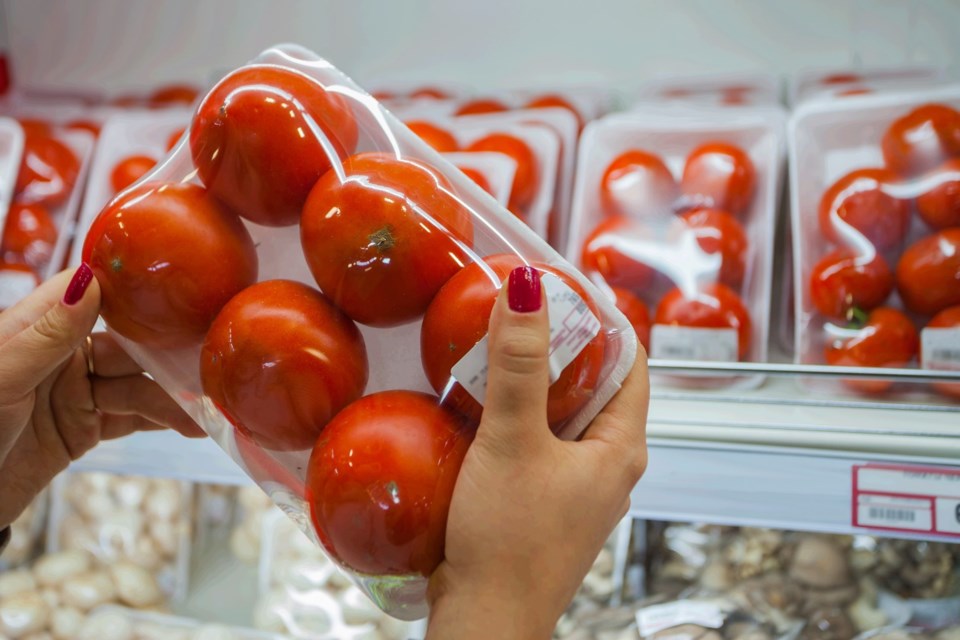REGINA — Canada’s fruit and vegetable industry is concerned it can’t meet new federal proposals for more sustainable packaging.
The president of the Canadian Produce Marketing Association said the 850 companies it represents, which grow, pack, ship and sell fresh produce, have already reduced their use of plastic by 17 percent to address the zero plastic waste agenda.
However, Environment and Climate Change Canada proposals “are impossible to meet for our sector,” Ron Lemaire told the standing committee on agriculture.
The April 2023 proposals set out targets to reduce plastic pollution, such as requiring 75 percent of fresh fruits and vegetables to be sold in bulk, without plastic packaging, by 2026, and 95
Grocers have estimated the elimination of plastics will cost them about $6 billion. Lemaire said that is a conservative estimate based on a 2023 Deloitte Canada report helping the industry understand the impacts of the ban.
“This isn’t single use plastics,” he said. “These are plastics that could be recycled and put into a circular economy. We’re anticipating if we were to eliminate the technology from our sector, it would be upwards of a 34 percent increase in food costs.”
He said there are some alternatives to plastics but they all come at a higher cost. Strawberries, for example, can’t be packed into some of them because they contain high moisture and wouldn’t survive shipping.
“We need to look at a fit-for-purpose package that meets the requirements,” he said.
“It would basically, with the current proposed model, eliminate all the bag salad industry. It would eliminate any of the value-added components, so all of the fresh cut business.”
Lemaire said there are food safety risks as well.
Conservative MP Lianne Rood asked about the economic impact of not providing fresh fruit and vegetable trays.
Lemaire said it would reduce consumption of fruits and vegetables, which is already far below recommended daily intake. Packaging can drive consumption and he said a further drop will also cost money.
“We are looking at that $8 billion figure (and) with every serving reduced, we see the numbers increase significantly,” he said. “We’re looking at conservatively $6 billion (grocer losses), add on $8 billion (cost of lower consumption).”
That affects the market and results in job loss from the sector, he said.
He also said the impact on food waste will be dramatic, at more than 50 percent for certain products.
“What’s really scary is an increase in greenhouse gas emissions of over 50 percent because of the waste components that start occurring from field right to the consumer,” he said.
Alistair MacGregor, the NDP agriculture critic, said plastic accumulation in the food chain, such as microplastics in fish, is a real concern. He asked what could be done to make sure plastics are 小蓝视频 reused.
Lemaire said Ottawa should take a strategic approach to harmonize recycling systems and educate Canadians.
“When we look at the proposed regulatory approach and the P2 (pollution prevention) notice, it is actually removing the ability for compostables and biodegradable plastic materials,” he said. “We have members who have invested in new technologies that have a totally biodegradable material that does not leave any microplastics in the environment. It’s quite costly, but the industry is invested.”
The use of fibre-based packaging is on the rise, he added.
Conservative agriculture critic John Barlow asked what effect the amendments to Bill C-234 would have on the sector if they went ahead. If the bill is passed as it currently stands, greenhouses would not be exempt from the carbon tax on their natural gas or propane charges.
Lemaire said the tax currently costs the greenhouse sector about $22 million a year, and that will rise to $100 million by 2030.
“We talk about food cost — this is putting it through the roof,” he said.
Stefan Larrass, chair of business risk management at Fruit and Vegetable Growers of Canada, also said the exemption would save producers tens of millions of dollars.
A 2022 survey found 44 percent of growers are operating at a loss and 77 percent can’t offset production cost increases.
He said other countries help their farmers much more than Canada does.
“When it comes to financial support, the U.S. provides twice as much as Canada to sectors that are outside of the supply management system.”
Horticultural operations don’t fit either AgriInsurance or AgriStability, Larrass said, and that has to change.




